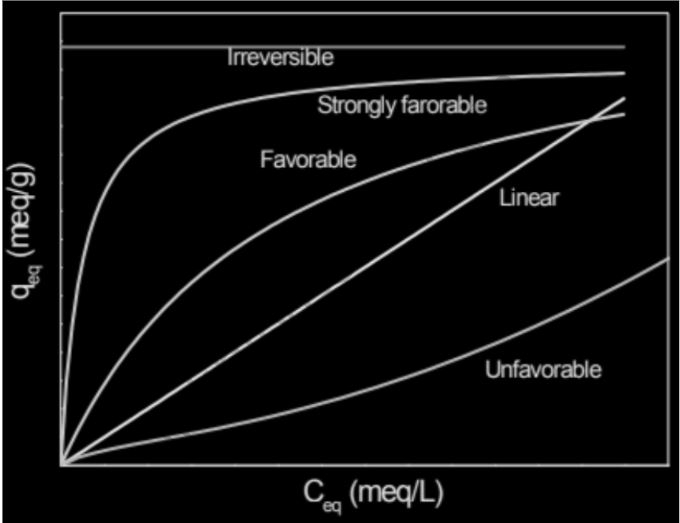Table of Contents
An isotherm is a line on a map that connects areas with the same temperature at the same time. In meteorology, isotherms are widely used to depict the temperature distribution at the Earth’s surface or to indicate constant level or constant pressure on a chart.
Isotherms:
- They’re imaginary lines drawn on a map that connect regions with similar temperatures when dropped to sea level.
- Isotherms that are close together suggest a wide temperature range.
- The temperature is expressed in degrees Celsius (°C) or Fahrenheit (°F).
A brief outline
An isothermal process is a sort of thermodynamic process in which the temperature T of a system remains unchanged: T = 0 in thermodynamics. When a system is in touch with an external thermal reservoir, and a change in the system occurs gradually enough, the system can be continually adjusted to the reservoir’s temperature through heat exchange (see quasi-equilibrium). An adiabatic process, on the other hand, occurs when a system exchanges no heat with its surroundings (Q = 0). The adjective “isothermal” comes from the Greek words “o” (“isos”), which means “equal,” and “therm,” which means “heat.”
Important concepts
Isothermal reactions can occur in any system with a temperature control mechanism, including highly organized machines and even live cells. Some parts of some heat engines’ cycles are carried out isothermally (for example, in the Carnot cycle). When looking at the thermodynamics of chemical reactions, it’s common to look at what happens under isothermal conditions first, then the effect of temperature. When phase transitions, such as melting or evaporation, take place at constant pressure, they are also isothermal processes. Isothermal processes are frequently utilized as a starting point for evaluating non-isothermal processes that are more complex.
Ideal gases are particularly interested in isothermal processes. This is due to Joule’s second law, which asserts that the internal energy of a certain amount of an ideal gas is solely determined by its temperature. As a result, the internal energy of an ideal gas remains constant in an isothermal process. This is due to the fact there were no intermolecular forces in a perfect gas. Note that this is only true for ideal gases; for liquids, solids, and real gases, the internal energy is affected by pressure as well as temperature.
When a gas is compressed isothermally, work is done on the system to reduce volume and increase pressure. Working on the gas increases its internal energy, which causes the temperature to rise. Energy must leave the situation as heat and enter the environment to maintain a steady temperature. Because internal energy does not change, the quantity of energy released to the environment is equal to the work done on the gas if it is perfect. The energy supplied for isothermal expansion has an effect on the environment. In either scenario, the change in gas volume can perform meaningful mechanical work with the help of an appropriate linkage.
Q = 0 for an adiabatic process in which no heat is transferred into or out of the gas due to its well-insulated container. There is no change in internal power if no labor is done, i.e., a free expansion. This implies that the process is also isothermal for an ideal gas. As a result, stating that a function is isothermal is insufficient to state that it is unique.
Isothermal Process Examples
- In systems with some mechanisms of temperature regulation, an isothermal process happens. This occurs in a wide range of systems, from highly organized machinery to living cells. Below are a few illustrations of isothermal reactions.
- Isothermal processes include changes in the state or phase of various liquids during the melting and evaporation processes.
- The Carnot engine is an example of an industrial application of the isothermal process. Some of the cycles in this engine are carried out isothermally.
- A refrigerator works on the principle of the isotherm. A refrigerator’s mechanism undergoes a series of adjustments, but the temperature inside remains unchanged. The heat energy is extracted and released into the surrounding environment at this point.
- The heat pump is another form of an isothermal process. The heat is either taken out of the house and deposited outdoors, or it is brought in from the outside to warm it up. The goal in each scenario is to keep a house at the required temperatures.

Significance of isotherms in IIT JEE exam
The states of matter chapter have a weightage of roughly 6.6 percent in all years due to the low weightage for the parts. This means that the total number of questions from this topic will be between 2 and 4, with a point value of 12 points. In this chapter, questions on solids, gases, liquids, and isotherms are frequently asked.
FAQs
Because the temperature of the system remains constant in an isothermal process, the change in temperature is always zero, and thus the change in internal energy is always zero.
The Isothermal process must proceed at a slow pace. As you'll see, keeping the system's temperature steady permits heat transfer. It denotes that the system and the body are in thermal balance. To maintain thermal equilibrium and a steady temperature, the procedure is run slowly. The time required for successful heat transfer will be longer, which will increase the cost.
Assume you want to raise the system's volume. The system should be isothermal. You'll need to build another arrangement to keep the temperature stable. The pressure is reduced as the volume is increased. Depending on the volume of the gas, the change in internal energy in the isothermal process is (A) positive (B) negative (C). (D) null?
Why is the isothermal process so slow?
What happens if I use external energy to expand the volume of a system in an isothermal process?



